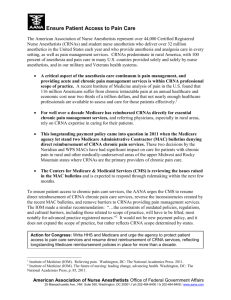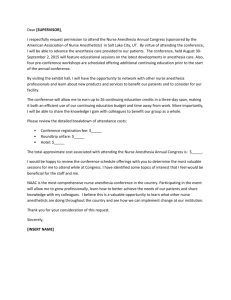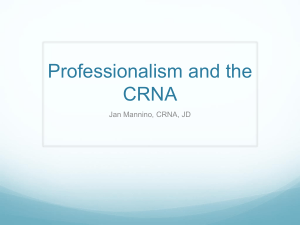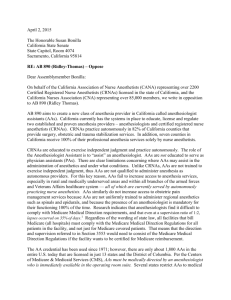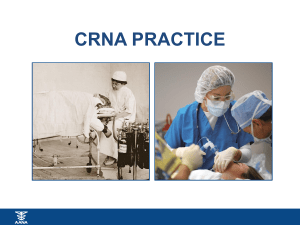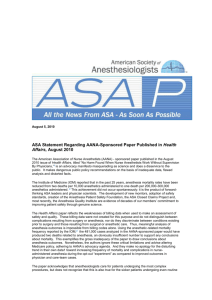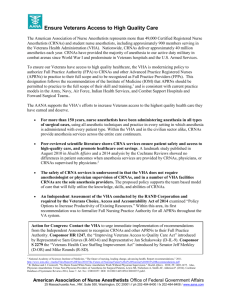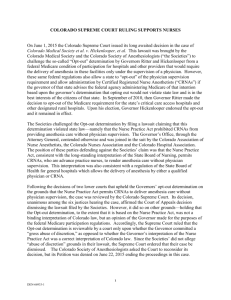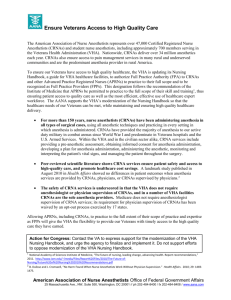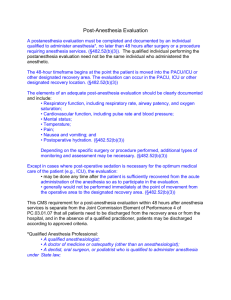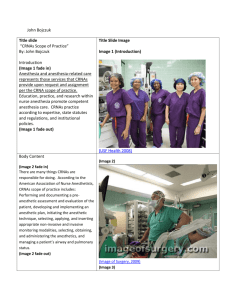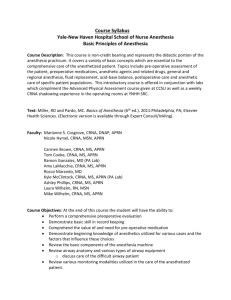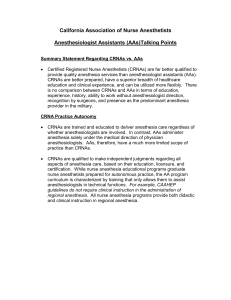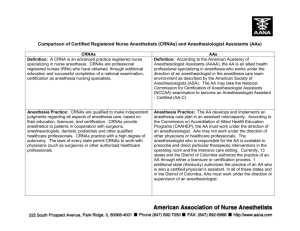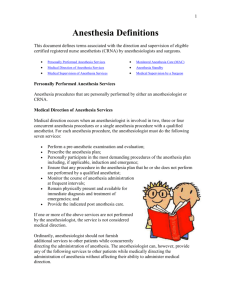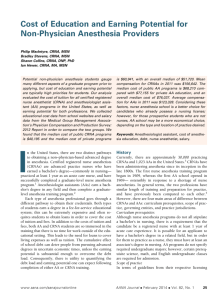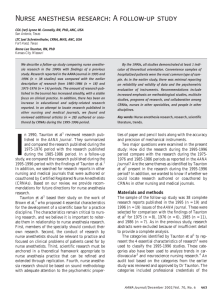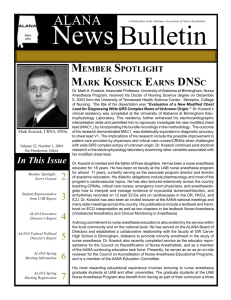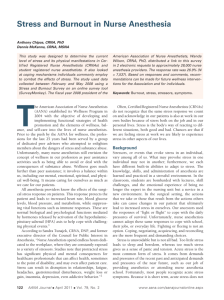Align Medicare Regulation with State Scope of Practice
advertisement
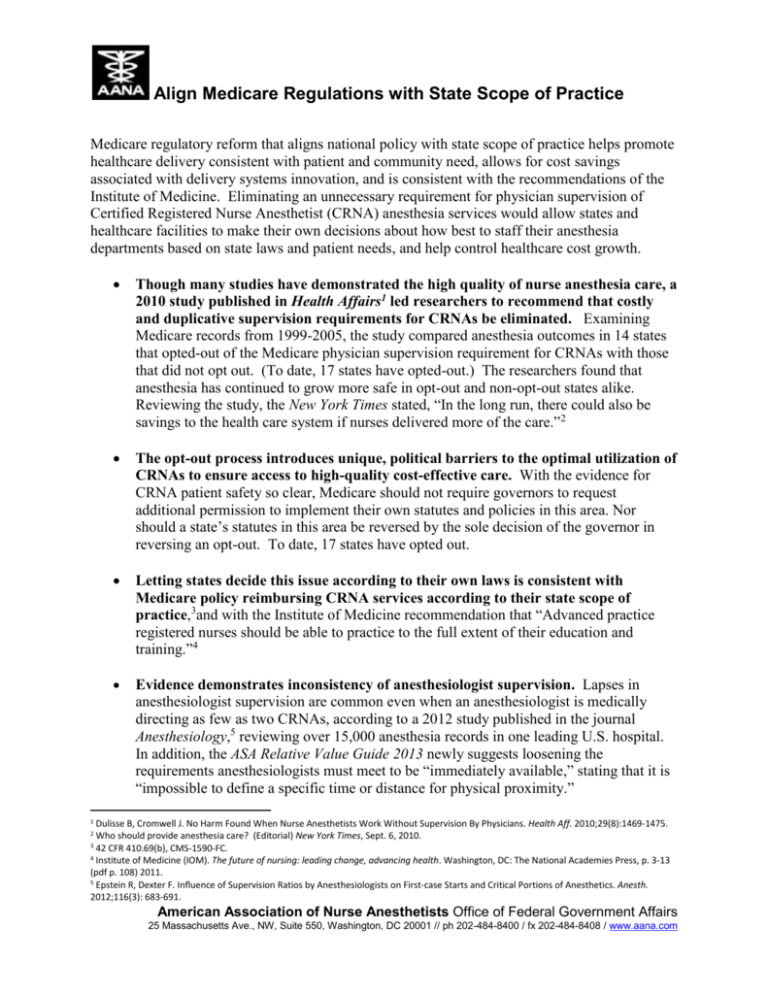
Align Medicare Regulations with State Scope of Practice Medicare regulatory reform that aligns national policy with state scope of practice helps promote healthcare delivery consistent with patient and community need, allows for cost savings associated with delivery systems innovation, and is consistent with the recommendations of the Institute of Medicine. Eliminating an unnecessary requirement for physician supervision of Certified Registered Nurse Anesthetist (CRNA) anesthesia services would allow states and healthcare facilities to make their own decisions about how best to staff their anesthesia departments based on state laws and patient needs, and help control healthcare cost growth. Though many studies have demonstrated the high quality of nurse anesthesia care, a 2010 study published in Health Affairs1 led researchers to recommend that costly and duplicative supervision requirements for CRNAs be eliminated. Examining Medicare records from 1999-2005, the study compared anesthesia outcomes in 14 states that opted-out of the Medicare physician supervision requirement for CRNAs with those that did not opt out. (To date, 17 states have opted-out.) The researchers found that anesthesia has continued to grow more safe in opt-out and non-opt-out states alike. Reviewing the study, the New York Times stated, “In the long run, there could also be savings to the health care system if nurses delivered more of the care.”2 The opt-out process introduces unique, political barriers to the optimal utilization of CRNAs to ensure access to high-quality cost-effective care. With the evidence for CRNA patient safety so clear, Medicare should not require governors to request additional permission to implement their own statutes and policies in this area. Nor should a state’s statutes in this area be reversed by the sole decision of the governor in reversing an opt-out. To date, 17 states have opted out. Letting states decide this issue according to their own laws is consistent with Medicare policy reimbursing CRNA services according to their state scope of practice,3and with the Institute of Medicine recommendation that “Advanced practice registered nurses should be able to practice to the full extent of their education and training.”4 Evidence demonstrates inconsistency of anesthesiologist supervision. Lapses in anesthesiologist supervision are common even when an anesthesiologist is medically directing as few as two CRNAs, according to a 2012 study published in the journal Anesthesiology,5 reviewing over 15,000 anesthesia records in one leading U.S. hospital. In addition, the ASA Relative Value Guide 2013 newly suggests loosening the requirements anesthesiologists must meet to be “immediately available,” stating that it is “impossible to define a specific time or distance for physical proximity.” 1 Dulisse B, Cromwell J. No Harm Found When Nurse Anesthetists Work Without Supervision By Physicians. Health Aff. 2010;29(8):1469-1475. Who should provide anesthesia care? (Editorial) New York Times, Sept. 6, 2010. 3 42 CFR 410.69(b), CMS-1590-FC. 4 Institute of Medicine (IOM). The future of nursing: leading change, advancing health. Washington, DC: The National Academies Press, p. 3-13 (pdf p. 108) 2011. 5 Epstein R, Dexter F. Influence of Supervision Ratios by Anesthesiologists on First-case Starts and Critical Portions of Anesthetics. Anesth. 2012;116(3): 683-691. 2 American Association of Nurse Anesthetists Office of Federal Government Affairs 25 Massachusetts Ave., NW, Suite 550, Washington, DC 20001 // ph 202-484-8400 / fx 202-484-8408 / www.aana.com
